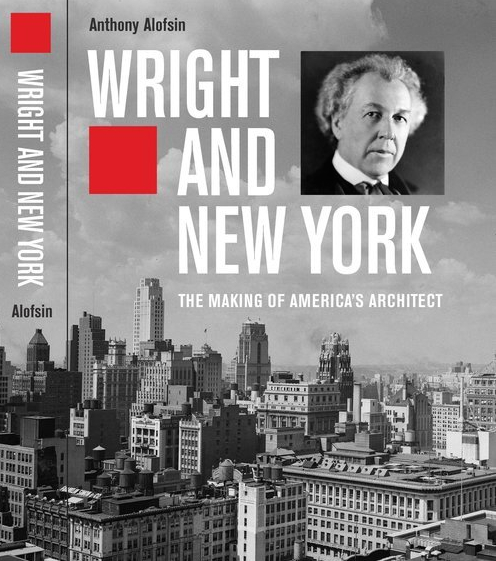NEWS & UPDATES
Announcing spring lectures, 2022 in phoenix and munich.
For Previous LECTURES SERIES:
A series of public lectures around the topic of his new book, Wright and New York: The Making of America’s Architect. Held in conversation with distinguished guests, these talks will raise issues not only of Frank Lloyd Wright’s legacy but also the role of the city in providing refuge and shelter to those seeking creative freedom and validation. All lectures will be held in the city of New York. Details and links here.
Exceptional reviews for Wright and New York: The Making of america’s architect
“A watershed investigation of Wright’s life in the 1920s, when he landed, adrift, in New York. The city proved antagonistic, irresistibly so, and transformed him. ”
Anthony Alofsin’s new book Wright and New York is earning praise and recognition from readers and critics alike. A dazzling dual portrait of Frank Lloyd Wright and early twentieth-century New York, revealing the city’s role in establishing the career of America’s most famous architect.
Frank Lloyd Wright (1867–1959) took his first major trip to New York in 1909, fleeing a failed marriage and artistic stagnation. He returned a decade later, his personal life and architectural career again in crisis. Booming 1920s New York served as a refuge, but it also challenged him and resurrected his career. Wright denounced New York as an “unlivable prison” even as he reveled in its culture. The city became an urban foil for Wright’s work in the desert and in the “organic architecture” he promoted as an alternative to American Art Deco and the International Style. New York became a major protagonist at the end of Wright’s life, as he spent his final years at the Plaza Hotel working on the Guggenheim Museum, the building that would cement his legacy.
Selected review excerpts:
“Meticulously researched, highly readable . . . Alofsin recounts this disastrous series of events in great detail before chronicling Wright’s gradual rebranding from pariah to hero, a long process that culminated in 1940 with a sweeping retrospective at MoMA.”—Fran Leadon, Gotham
“Anthony Alofsin engagingly examines Frank Lloyd Wright’s previously unexplored relationship with New York City and the influence one had over the other. Illuminating an atmosphere of turbulent change and a burgeoning bohemian culture, this is the perfect book to read when navigating a city that seems, more than ever, a victim of heartless reconstruction.”—Patti Smith
“A watershed investigation of Wright’s life in the 1920s, when he landed, adrift, in New York. The city proved antagonistic, irresistibly so, and transformed him. Alofsin’s erudition, compelling prose, and first-rate detective work will alter how you perceive both Wright and Manhattan.”—Judith Dupré, New York Times bestselling author of Skyscrapers
"Alofsin chronicles the relationship between America’s greatest architect and its greatest city with the precision of a detective, the perspective of a historian, and the flair of a novelist."—Thomas Mellins, author of New York 1930: Architecture and Urbanism Between the Two World Wars
Wright and New York tells the story of how New York rescued Wright in the late 1920s and early 1930s from the doldrums of his career. In doing so it reveals much about Wright, his circle of friends and colleagues and the whirl of New York at the end of the Jazz Age.
UT Libraries Acquires the Anthony Alofsin Archive
From Architect:
Architect Anthony Alofsin, FAIA, has donated an archive of his life’s work to the Alexander Architectural Archives and Architecture & Planning Library at the University of Texas at Austin. The archive includes articles, manuscripts, photographs, architectural sketches, books, and journals. The collection reflects the 30-year career of Alofsin and his accomplishments. “In sharing the corpus of his professional work with the Alexander Archive, Professor Alofsin adds to UT’s extraordinary special collections, enhancing our research and aiding in the recruitment of outstanding students, faculty and scholars,” said UT Austin President Gregory L. Fenves. Alofsin has been an active member at the UT School of Architecture in the last three decades. He has taught and founded the school’s Ph.D. program. Addition to the archive, Alofsin made a monetary donation to help provide the institution with an archivist to process the collection.
Read More:

